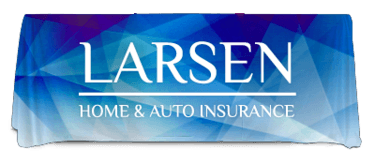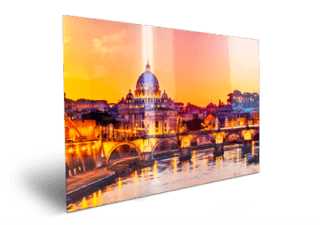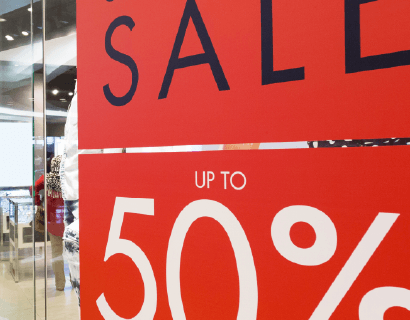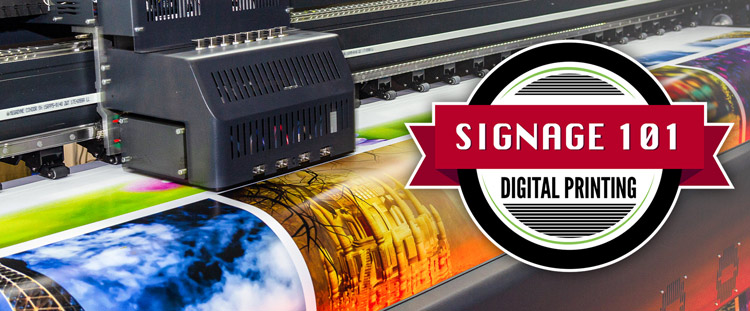“What is digital printing?” is a question we often get asked here. “And isn’t everything digitally printed these days? After all, it’s 2020 (nearly 2021), not 1920 – what isn’t digital?”
So let’s first address the second question: Has digital technology completely overtaken printing? Well, actually no – analog still rules the printing roost, so to speak, especially commercial offset (because it’s designed for mass production). When you take into consideration all the books, newspapers, magazines, catalogs, and other materials that are printed on offset presses, this is probably no real surprise.
However, digital printing is certainly on the rise – it’s the fastest-growing printing technology. And when it comes to printing signage, well, digital is definitely where it’s at. In fact, a majority of all advertising-related printing – which includes signage as well as displays, flyers, and more – is now produced by one particular form of digital printing: inkjet.
What is Digital Printing?
At the most basic level, digital printing involves printing from a digital-based image onto a substrate – paper, plastic, metal, etc. And while traditional printing typically involves printing plates – because the image is first printed onto a plate of some sort and that plate is then pressed to the substrate (or vice versa) – digital printing does not utilize plates at all. Rather, in most cases the ink is directly applied or jetted onto the substrate.
Digital printing offers quite a few advantages over traditional print processes, including:
- Because there are none of the aforementioned plates, the entire printing process is faster (especially the setup/changeout). And, of course, there’s no need to replace any plates – hence, lower costs for the print provider, and lower costs to the customer.
- Digital printing allows for one-off printing, something traditional printing cannot do economically.
- Digital printing easily allows for each print to contain different information or be a different version (aka “versioned” or “variable printing”).
Innovative Inkjet
As we mentioned earlier, inkjet is the most common type of digital printing – if you have a desktop printer, it’s likely an inkjet printer. Without getting into the intricacies of inkjet mechanics, the ink is jetted onto the paper, plastic, or other substrate without any of the printer’s “hard” components coming in contact with the substrate.
First, some basics: Two primary ways to think about inkjet printing include, a) the size and type of substrate or media that’s being printed; and b) just how that media is “fed” through the printer.
As inkjet technology progressed from desktops, some companies began developing larger sizes of units. These larger inkjet printers were initially created as proofing devices. Because commercial analog presses are engineered for very long runs, inkjet printers were designed so print shops could output one-off “previews”(proofs) of what the final printed product would look like.
Eventually, those printers began being used for actual final products, not just proofs. And here’s a fun bit of inkjet history: One of the early endeavors to use inkjet for a final product was by musician Graham Nash – of Crosby, Stills, Nash & Young rock fame. A photographer in his “spare time,” Nash partnered with Mac Holbert to create Nash Editions and turn an Iris inkjet printer into a full-fledged output machine for fine art. (That particular inkjet machine, by the way, is now on display at the National Museum of American History in Washington D.C.).
Innovations like this spurred on an inkjet evolution that allowed for printing of even larger-sized images and graphics. As these printers matured and moved into the printing mainstream, they came to be known as wide-format or large-format printers (the terms are interchangeable). These printers typically printed on paper, vinyl, or other substrates that were fed through, either on a large roll (“rollfed”) or sheet-by-sheet (“sheetfed”). But these machines were still limited to primarily thin media.
The next stage in the development of large-format inkjet: the flatbed printer. This innovation allowed for the printing of thicker and rigid substrates such as corrugated plastics, fiberboard, aluminum, and even standard entry doors. With this type of printer, the media or substrate remains stationary, while the printhead(s) (housed in a gantry) moves above, dispersing the ink. In addition, there are hybrid printers – these printers allow for either rollfed or flat and rigid media to be printed.
Think Inks
Another primary way to think about digital inkjet printing is by the type of ink that the printer utilizes.
Aqueous inks: Your desktop printer probably uses aqueous inks. These water-based inks were the original type of inkjet inks and they come in two varieties – dye-based and pigment-based inks. Although dye-based inks are more vibrant than pigment-based inks (because they’re absorbed into the paper or substrate) and offer a very broad color gamut, they’re not nearly as durable. Pigment-based inks do a much better job at resisting fading as well as water. Dye-based inks are primarily used for photographic or fine-art applications or other products that will be used indoors. Pigment-based inks can be used for short-term outdoor applications, but will fade relatively quickly when exposed to sunlight
Solvents and light-solvents: Solvent inks came next in the “history” of inkjet. These inks fiercely bond to most media and so they’re very durable and vibrant. But solvents also contain volatile organic compounds (VOCs), which pose a health and safety issue; and because their chemical odor lingers long after printing, using solvents for indoor applications isn’t a realistic choice. Light solvents (aka “eco-solvents”) were formulated to address many of solvent’s negatives, including lessening solvent toxicity – they have a lower VOC content. Here in the States, light solvents have all but replaced original solvents (now called “true” or “hard” solvents).
UV inks: These inks are dried (“cured”) by applying UV light and are now the most common ink used for signage. Capable of printing onto just about any media (including rigid substrates– everything from corrugated plastic and aluminum to fiberboard, wood, and more), they don’t release chemicals into the air when drying because they don’t dry by evaporating. They may not be quite as vibrant as solvent inks, but they’re extremely durable, they don’t require any kind of laminating or protective clear coating, they’re weather-resistant, and they’re 99.5% VOC-free. Slowly but surely, inks that can be cured by cooler UV LED lamps are replacing inks that dry by standard UV light.
Here at Signs.com, we use UV inks in conjunction with our flatbed printers when producing all of our rigid signs – from yard signs and A-frames, to aluminum signage, cardstock posters, and even our giant checks. But UV inks are a kind of “jack of all trades” when it comes to printing, so we also turn to them for printing our window and floor decals, vinyl banners, and promotional magnets. As noted above, UV inks are weather-, fade-, and abrasion-resistant on every signage type, helping ensure your message and graphics stay crisp and vibrant.
Latex inks – The addition of latex particles to these aqueous-based pigmented inks provides them with many of the advantages of solvents but without any associated health and safety hazards (no VOCs or hazardous air pollutants) or solvent odor. As with UV inks, these fast-drying inks can be utilized across various media and substrates.
Dye-sublimation printing – We’ll devote an entire blog to dye-sublimation printing in the future, but here is the short version: Dye-sub printing is different from the other inkjet technologies because you don’t print direct onto the media or substrate. When used for fabric printing – such as with fabric banners – dye-sublimation involves using inks to print onto transfer paper. The design on the transfer paper is then “sublimated” onto the receiving fabric using a heat press – the design is actually embedded into the fabric. Dye-sub inks are quite vibrant, so the design retains its colorful look. Plus, because the inks basically become part of the fabric, dye-sub products maintain a soft feel or “hand” (which is critical if the product is, say, a shirt or scarf).
We utilize dye-sublimation printing for all of our fabric products at Signs.com: banners, table covers, pop-up tents, and advertising flags, as well as our face masks and neck gaiters. We have found dye-sublimation to be the ideal printing solution for any fabric because the technology produces signage that is not only vivid but also durable.
Non-inkjet and Non-digital
What about non-inkjet and non-ink types of digital printing? Yes, there are those, too – and some that can produce large-size prints, but not many are utilized to produce traditional signage. For example, some machines utilize dry and liquid toner (and toner-gel hybrids) for both large-format and small-format output. One company even made a printer (since discontinued) that utilized a “solid ink” material, where solid ink pellets were melted within the printer, then jetted out the ink onto media.
Another alternative to inkjet: Large-format photo printing – a photo printer digitally exposes and develops photographic prints onto photographic papers. Images are produced by exposing light sensitive material with RGB laser light, then developed through a chemical process. Many consider this technology to be the highest-quality of all printing methods, and you can find it being used in the fine-art and high-end advertising markets. Although most companies have since discontinued manufacturing these types of printers, we have retained one of these machines at Signs.com and we use it in producing our posters.
Screen printing is, of course, the analog printing process most folks are familiar with, and which preceded inkjet by 100 years or more. Basically a stenciling process that involves layering inks over mesh screens, screen printing is a very involved process that can have economic benefits at extremely high volumes, but takes longer to turn around jobs, doesn’t do well with one-off production, and is generally less precise than digital printing.
The Great and Narrow
We have focused on large-format and signage applications of digital printing for purposes of this blog – however, digital printing has also made inroads to the narrow-format side of things. Yes, non-digital still rules when it comes to printing newspapers, books, and magazines, but you’ll find myriad other products that are digitally printed: business cards, counter cards, door hangers, labels and much more.
Whether your marketing and signage needs are big or small, today’s digital printing technologies can help turn your ideas into vibrant, durable messaging. If you have questions about how digital can work for you, don’t hesitate to query our customer service department.




































